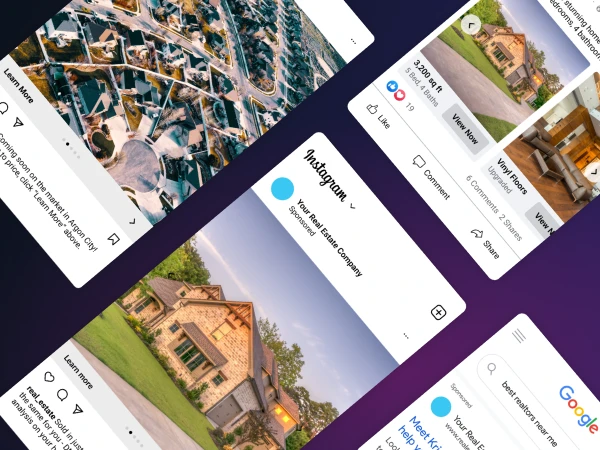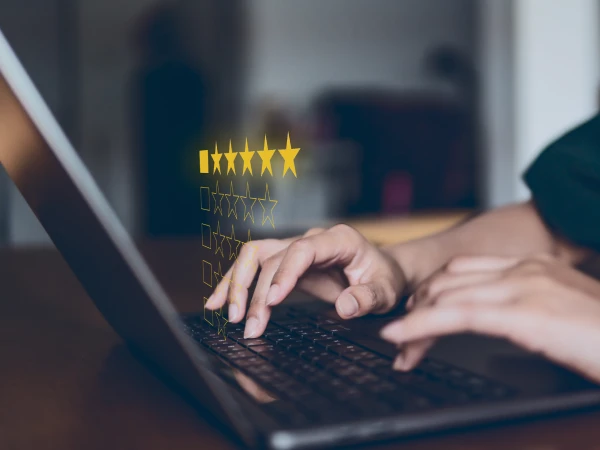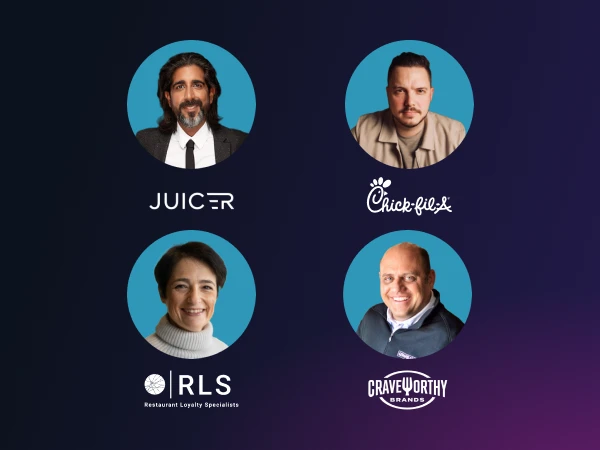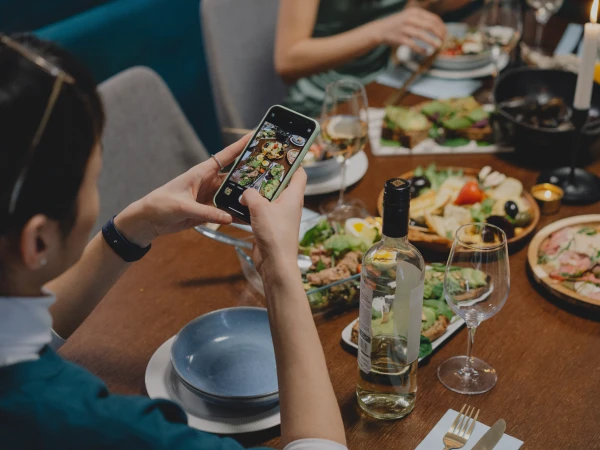
Harness user-generated content for multi-location brands
Share
Schedule a 30-min marketing strategy call with our team
In today’s digital age, where information is at our fingertips and authenticity is prized, user-generated content (UGC) has emerged as a potent force that shapes the success of multi-location brands.
But what exactly is user-generated content, why has it become such a game-changer, and how should you use user-generated content for multi-location brands?
User-generated content refers to any form of content created and shared by individuals who are not associated with a brand or business. It’s the raw, unfiltered content that springs directly from the experiences, opinions, and creativity of customers and fans. UGC can take various forms, including:
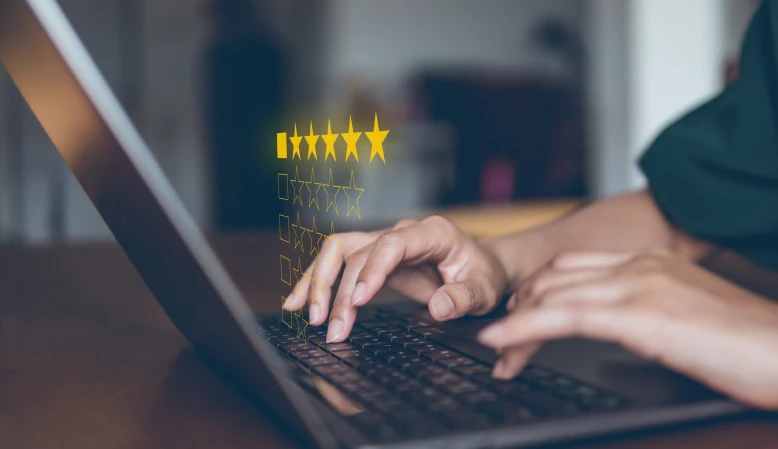
1. Customer reviews: These are the lifeblood of many businesses. From a cozy neighborhood café to a sprawling franchise of international acclaim, every establishment values the unvarnished feedback of its patrons.
2. Social media posts: Platforms like Facebook, Instagram, Twitter, and TikTok have become breeding grounds for UGC. Customers share images, videos, stories, and comments that resonate with their experiences.
3. Images and videos: Whether it’s snapshots of a delicious meal at a restaurant or a heartfelt testimonial video about a real estate agency, visual content is powerful UGC.
4. Blogs and articles: Some users are so passionate about their experiences that they dedicate entire blogs or articles to share their insights, tips, and stories related to multi-location brands.
5. Forums and Q&A sites: Sites like Reddit, Quora, and TripAdvisor are treasure troves of UGC, where users seek advice, share experiences, and discuss various brands and locations.
In an era when skepticism towards traditional advertising is on the rise, consumers have turned to UGC as a source of trust and authenticity. According to a survey by Stackla, 79% of people say user-generated content highly impacts their purchasing decisions.
The rise of user-generated content for multi-location brands is not just a trend; it’s a strategic imperative. As we delve deeper into this blog post, we’ll explore how harnessing the potential of UGC can help multi-location businesses build trust, authenticity, and engagement across all their branches.
How UGC brings authenticity
User-generated content for multi-location brands brings the authenticity that multi-location brands crave. It showcases real customer experiences. Here’s how UGC achieves this:
Real stories: UGC captures the real stories and experiences of customers at various locations. Whether it’s a heartwarming interaction with a staff member at a franchise or a mouthwatering photo of a meal at a restaurant, these stories resonate because they are genuine.
Imperfect perfection: Authenticity doesn’t mean everything is perfect; it means embracing imperfections. UGC often features candid moments and unfiltered reviews, making it relatable and authentic.
Community-driven: Multi-location brands thrive on their communities. UGC is a testament to the brand’s ability to foster a community of loyal customers who genuinely love what it offers.
Successful examples of UGC in multi-location brands
Let’s explore how some multi-location brands have successfully harnessed UGC to amplify their authenticity:
McDonald’s: McDonald’s launched the #MyMcDonalds campaign, inviting customers to share their unique McDonald’s stories. These heartwarming and sometimes nostalgic stories connect with customers on a personal level.
Pepper Lunch: On the Local Marketing Podcast, the CEO of Pepper Lunch North America shared how their restaurant model naturally generates buzz. At every table, it’s normal to see people taking photos or filming their experience. Check out the summary here.
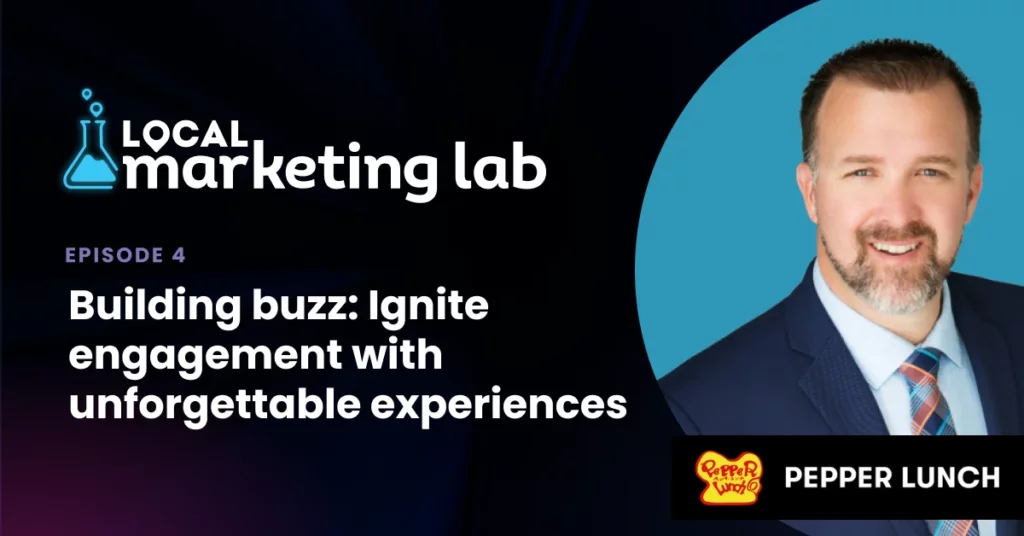
Yelp: While not a brand in the traditional sense, Yelp thrives on UGC. It’s a platform where consumers can share their real experiences with businesses, including multi-location ones. The platform’s reviews and ratings are a testament to the power of authentic customer feedback.
Incorporating UGC into your multi-location brand strategy isn’t just a choice; it’s a necessity. It’s the conduit through which the real stories, experiences, and voices of your customers can shine. It’s how you can ensure that authenticity is not just a promise but a reality across all your branches.
Collecting and curating user-generated content for multi-location brands
So, you’re convinced that user-generated content for multi-location brands is the trust-building magic wand your brand needs. Fantastic! Now, let’s get down to the nitty-gritty of how to collect and curate this treasure trove of authenticity.
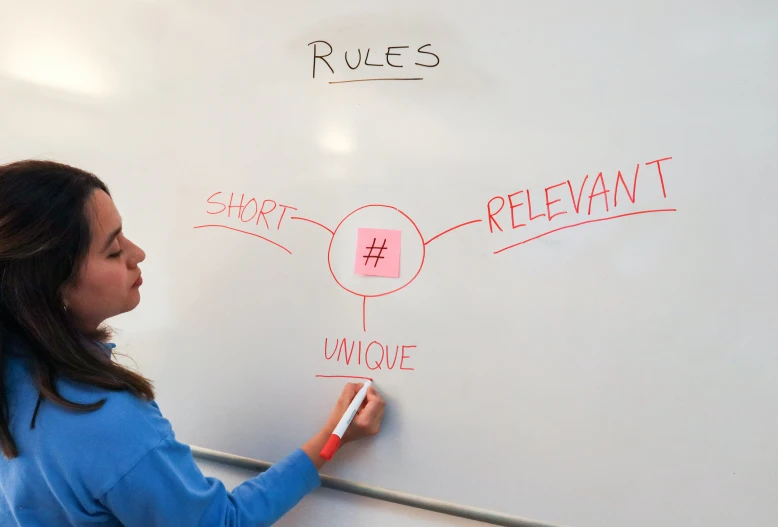
Create branded hashtags: Encourage customers to use a specific hashtag when posting about their experiences at your various locations. This not only makes it easier for you to find UGC but also unifies your brand’s presence across platforms. For example, if your brand is “Deluxe Dining,” a hashtag like #DeluxeDiningMoments works wonders.
Leverage location tags: If your multi-location brand has a presence on platforms like Instagram and Facebook, make sure to enable location tagging. This allows customers to associate their content directly with a specific branch, making it highly relevant and valuable for that location.
Run UGC contests: Organize contests or challenges that encourage customers to create and share content related to their experiences at your branches. Offer incentives like discounts, freebies, or even feature their content on your official channels.
Ask for reviews: Encourage customers to leave reviews on platforms like Google, Yelp, or TripAdvisor. Reviews are a form of user-generated content for multi-location brands that carry substantial weight in building trust. Make the process easy by providing clear instructions and direct links.
Tools and platforms for UGC management
Managing user-generated content for multi-location brands can be a breeze with the right tools and platforms:
Social media management tools: Tools like Hootsuite, Buffer, or Sprout Social allow you to monitor social media mentions and hashtags across multiple locations. You can track UGC, engage with customers, and schedule posts to share UGC strategically.
Review management platforms: Platforms like Trustpilot and Bazaarvoice can help you collect and display customer reviews from various locations. They often offer automated features for requesting reviews and monitoring your online reputation.
UGC aggregator tools: Tools like TINT and Taggbox aggregate UGC from various social media platforms and display it on your website or in-store screens. This creates a dynamic and interactive experience for customers.
Tailoring UGC across multiple locations
You’ve collected a treasure trove of user-generated content. Now, it’s time to strategically wield this powerful tool to boost the reputation and engagement of your multi-location brand.
While UGC is a unified testament to your brand’s appeal, each location within your multi-location brand might have unique characteristics, demographics, or local trends. Tailoring user-generated content for multi-location brands is a savvy move:
Localized hashtags: Create location-specific hashtags that highlight the distinct attributes of each branch. For example, if you run a chain of fitness centers, #FitInLA might be perfect for your Los Angeles location, while #HealthyHustleNYC suits your New York branch.
Geo-targeted campaigns: When running UGC campaigns, segment your audience based on location. Share UGC from a specific branch with its respective local audience. Geo-targeted ads on social media platforms can help you achieve this effectively.
When it comes to effectively distributing user-generated content for multi-location brands, Evocalize streamlines the process of sharing UGC across multiple channels simultaneously, ensuring your brand’s authentic customer experiences reach the widest audience.
Your UGC campaign is optimized for performance by identifying the best-performing platforms, infusing appropriate keywords for enhanced discoverability, and meticulously fine-tuning targeting parameters. With Evocalize’s assistance, your multi-location brand can effortlessly harness the power of user-generated content for bolstering its online presence, and in turn, significantly improve the overall customer trust and engagement.
Local events and festivals: Incorporate local events, holidays, or festivals into your UGC campaigns. For example, if you’re a restaurant chain, encourage customers to share UGC related to regional food festivals or cultural celebrations.
User-generated content for multi-location brands can be turbocharged with localized content:
Local influencers: Collaborate with local influencers who resonate with your target audience in each location. Their UGC can be a bridge between your brand and the local community.

Customer spotlights: Spotlight local customers who have compelling stories or experiences related to your brand. Share their UGC along with their narratives to create a deeper connection.
Community engagement: Engage with local community groups and organizations. Encourage them to participate in UGC campaigns that celebrate community spirit and pride.
Maintaining brand consistency
While customization is essential for tailoring user-generated content for multi-location brands, brand consistency should never be compromised. Here’s how to strike the right balance:
Establish clear brand guidelines: Provide your marketing teams at each location with clear brand guidelines. These guidelines should outline the do’s and don’ts when using UGC and help maintain a consistent brand image.
Use branded templates: Create templates or frames that can be superimposed on UGC. These templates should incorporate your brand’s logo, colors, and other visual elements. This ensures that UGC aligns with your brand identity. Evocalize sets up branded templates for digital marketing called blueprints.

Localize, don’t disguise: Instead of completely altering UGC to fit a location, consider subtle localization. Add captions or descriptions that mention the location or highlight local features. This maintains authenticity while connecting with local audiences.
Measuring the impact of user-generated content for multi-location brands
Measuring the effectiveness of your UGC campaigns is crucial to fine-tuning your strategies and ensuring a strong return on investment (ROI).
Engagement rates: Keep a close eye on engagement metrics such as likes, comments, shares, and click-through rates on UGC posts. These interactions indicate the level of audience involvement and interest in your content.
Conversions: Track the number of conversions generated from UGC campaigns. This could include sign-ups, purchases, reservations, or any other actions that align with your campaign goals. UGC’s ability to influence these actions is a significant measure of its impact.
Sentiment analysis: Utilize sentiment analysis tools to gauge the overall sentiment of user-generated content related to your brand. Are customers expressing positive or negative feelings? This analysis can reveal the emotional impact of UGC on your audience.
Audience growth: Measure the growth of your social media followers, email subscribers, or other relevant metrics during and after UGC campaigns. Positive UGC experiences can attract new followers and expand your brand’s reach.
Click-through rates (CTR): Analyze the CTR on UGC-driven ads or links. This metric provides insights into how well UGC is driving traffic to your website or landing pages.
Tips for getting started with UGC
Here’s a step-by-step guide to help marketing leadership kickstart user-generated content for multi-location brands:
1. Define your objectives
Determine what you want to achieve with your UGC campaign. Are you aiming to increase brand awareness, boost sales, gather customer feedback, or build trust? Clear objectives will guide your strategy.
2. Know your audience
Understand the different audience segments for your various locations. Tailor UGC campaigns to address the specific needs and preferences of each group.
3. Choose the right platform
Identify the social media platforms, review sites, or other online spaces where your target audience is most active. Concentrate your UGC efforts on these platforms.
4. Develop UGC campaign ideas
Come up with engaging UGC campaign ideas that align with your brand’s values and resonate with your audience. Consider challenges, contests, or themed campaigns.
Encourage customers to leave reviews on platforms like Google My Business, Yelp, or TripAdvisor. Positive reviews not only build trust but also boost local search rankings.
5. Create clear guidelines
Establish clear guidelines for user-generated content submissions. Specify what type of content is acceptable and aligns with your brand’s image.
6. Promote your campaign
Create unique branded hashtags for your campaign. Encourage participants to use these hashtags in their posts to make content discoverable.
Send targeted emails to your customer database, inviting them to participate in your UGC campaign. Include clear instructions and incentives if applicable.
7. Engage and interact
Respond to UGC submissions, whether they are comments, reviews, or social media posts. Show appreciation for user-generated content by liking, sharing, or featuring it.
8. Obtain permissions
Always ask for permission before repurposing UGC. This step is essential to avoid copyright issues and respect contributors’ rights.
9. Monitor and moderate
Regularly review UGC to ensure it complies with your guidelines. Remove or address any inappropriate content promptly.
10. Analyze and optimize
Use the key performance indicators (KPIs) mentioned earlier to assess the effectiveness of your UGC campaign.
Analyze the data to understand what worked and what didn’t. Adjust your UGC strategy based on these insights for continuous improvement.
Conclusion
With the exponential growth of UGC on various platforms and consumers’ innate trust in real experiences shared by their peers, multi-location brands have an incredible opportunity to harness this power.
Incorporating UGC into your marketing strategy isn’t just a trend; it’s a strategic move that can set your brand apart in the competitive digital arena. By collecting and curating UGC, showcasing it across your multiple locations while maintaining brand consistency, and meticulously measuring its impact, you’re on the path to not only increasing trust but also driving tangible results.
Platforms like Evocalize have emerged as invaluable partners in seamlessly distributing and optimizing user-generated content for multi-location brands across various channels. By automating the process, adding relevant keywords, and ensuring precise targeting, Evocalize empowers multi-location brands to make the most of their UGC.
Share
Subscribe to our blog
Don’t miss a beat in the fast-changing local digital marketing landscape — sign up to stay ahead of the curve!


